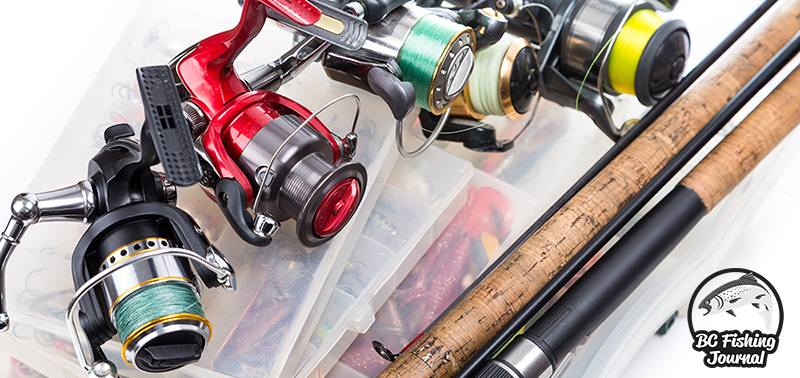
What is the Best Fishing Fillet Knife – Gear Guide
Have you ever been frustrated with your knife when filleting your fish? Perhaps your fillets turned out like something Freddy Krueger chopped up, or you’re looking for an easier and faster knife to use…
I totally get this, especially when I’m filleting multiple fish after a long day of fishing. I recall having to fillet 6 large Chum Salmon after a long day with an ineffective fillet knife. After that timely and frustrating process, I decided to upgrade my fillet knife.
The upgraded knife has impacted the time and ease in which I’m filleting these fish. Additionally, I’ve reduced any wasted harvested meat and am very happy with the end result.
In this post, I’m going to show you what to look for in a quality knife for filleting fish.
Our Top Fishing Fillet Knives
Top 3 Actions a Good Fillet Knife Needs to do
There are many advantages to a thin, flexible and sharp fillet knife, here are the most important tasks a fillet knife needs to do efficiently and effectively:
- Fillet the fish – Duh! Meaning, removes the maximum amount of meat from the bone and cartilage.
- Skin the fish – Skinning is the process of removing the skin or scales from the meat. Here a thin knife excels in reducing the amount of wasted meat close to the skin/scales.
- De-bone the fish – Removing smaller bones from the cut fillets. These are often the smaller pin bones and rib cage. Additionally, a good fillet knife will be able to cut through larger bones (e.g. spine) as well.

What Length Should the Knife be?
The blade length is usually aligned with the size of the fish being filleted. For example if you’re filleting a Crappie vs. a Salmon there are benefits to having a smaller vs. larger blade size. A smaller blade has a higher flexibility so is better suited for smaller fish (e.g. Crappie). Having a 9” blade for a 10” fish is not ideal. And of course the same is true on the larger fish as well.
General fillet knives sizes range from 4” to 10”. However, if I had to pick one knife size to fit all it would be a medium size between 7” to 8” inches. This medium blade size will accommodate the fillet process for fish of all sizes with little difficulty.
What is the Best Handle or Grip for a Fillet Knife?
A good handle will provide a proper grip and comfort when in use. For obvious safety reasons and best usage it it shouldn’t slip when wet or when you’re getting the proper leverage on the knife. I would avoid knives with finger pre molds as all grips are different and more often than not these provide a worse grip for a fillet knife.
Handle Material
Fillet knife handles come in a vast array of materials, everything from angler bone to pitted metals. The three most common handles are made from:
- Wood
- Plastic
- Rubber
I recommend a soft grip rubber which provides the best non-slip hold and ergonomic feel. Wood looks cool but can slip and sometimes over time can take on the fish smell.

Fillet Knife Blade Flex and Hardness
You may have noticed a large range of pricing between fillet knives, this is primarily based on the quality of the blade. The quality blade needs to be both flexible and made from a hard metal.
Flexibility of the blade should not be overlooked as it makes your cuts more efficient as the blade can better maneuver along the backbone and pin bones. Again, giving you a better cut with less meat wasted.
A hard metal ensures the blade will hold its edge (aka. sharpness). There is a Rockwell scale that defines how hard a metal is used to detail how hard a metal is. Generally speaking, the higher the number the better (harder). A higher end fillet knife will have a Rockwell scale rating between 55- 61.
The lower end fillet knives are made of softer metals (e.g. carbon steel). Although these blades may offer great flexibility, they are difficult to sharpen and don’t hold their edge for very long. This often results in these blades having to be replaced every few years.
The higher end fillet knives are made of stainless steel with other mixed metals that are non corrosive, provide the necessary flexibility, sharpen easily and hold their edge for a very long time.

Style of Fillet Knives: German vs. Japanese
The two most common styles of fillet knives are the German (Scandinavian) style and Japanese style. They have many similarities but here are some general differences which may help you better choose the best fillet knife.
German (Scandinavian) style
- Often have the double-beveled blade (can be sharpened on both sides of the blade)
- Heavier blade because the it’s typically thicker, especially at the bolster (where the blade connects with the handle)
- Larger angle on the blade so is better suited for rocking style of chopping
- The steel is often a little softer than the Japanese style
Japanese style
- Often have the single-beveled blade (is sharpened on one side of the blade)
- Lighter because of the thinner blade
- Less angle on the blade so it’s best suited for making clean slices and chopping
- The steel is often harder than the German style making it a sharper knife
For me, I prefer the German style being thicker and more rugged as I’m often doing my filleting outside in rougher conditions. The Japanese blade is better suited for precise work and attention to detail. When I’m filleting a lot of fish I’m not taking a ton of time on each one, and am not taking advantage of the thinner Japanese blade. Lastly, the thicker German blade is better fit for breaking and cutting through bones which is a pretty common for me when I’m looking to use up the entire fish for crab bait!
6 Best Fishing Fillet Knifes
Here are our recommended fillet knives that cover a range of price points. Read the short reviews as there is a filet knife for all types of frequency of use and for various species types/sizes.
The Bubba Blade Stiffie fillet knife is ideal for working with bigger game. Whether field dressing a deer or cutting up a big Tuna on the boat, this is the right knife for the job. Also, if you’re doing a lot of bone or shell cuts the leverage of the handle and thicker blade make the job much easier than standard fillet knives.
Lastly, even though the blade does have that savage Rambo look and grit, it’s still incredibly sharp with a specially designed bevel edge like a sushi knife so you can still get those thinner cuts. It provides a good balance between strength and finesse as a fillet knife.
Pros
- Strong and rugged blade for larger game & fish
- Trigger grip handle
- Big knife with thin cuts
- Rockwell score of 56-58
Cons
- No blade flex
- Not great for smaller fish
Pros
- Made from a single piece of high-carbon and stainless steel
- Thin blade for precision cuts and smaller fish
- Rockwell score of 58
- Dishwasher safe
- Lifetime warranty
Cons
- None
Pros
- Made from a single piece of high-carbon and stainless steel
- Thin blade for precision cuts and smaller fish
- Rockwell score of 58
- Dishwasher safe
- Lifetime warranty
Cons
- None
The Bubba Blade flex fillet knife is ideal for making those precise thin cuts along the bone. Lastly, even though the blade does have that savage Rambo look and grit, it’s still incredibly sharp with a specially designed bevel edge like a sushi knife so you can still get those thinner cuts. It provides a good balance between strength and finesse as a fillet knife.
Pros
- Flexible blade
- Trigger grip handle
- Rockwell score of 56-58
Cons
- None
The handle is made of black pakkawood which is an engineered wood & plastic material designed for rough use and wear. It’s also laminated for extra water and stain resistance. The bolster adds finger protection while providing counter weight making for a balanced and nice hold/feel.
The Dalstrong knife price point is slightly lower than the knives above but still holds high quality features. If you’re on a bit of budget for a fillet knife this might be a better option. Lastly, they have a good return policy if you’re unhappy with the knife.
Pros
- Good price point vs. quality
- Rockwell score of 55
- Good return policy
Cons
- Some buyers have found the knife not that sharp out of the box
That said, if you’re looking for a quality fillet knife for occasional usage this knife is a good value for the money. The 7.5 inch Swedish stainless steel blade is the ideal size for most sized fish. The reinforced birch varnished handle is a nice visual touch but won’t provide the same grip to plastic when it’s wet. Again for the low cost this would also make a great backup fillet knife.
Pros
- Low price
- Comes with leather sheath and sharpener
Cons
- Softer steel so it won’t hold its edge as long and will often require sharpening
- Lower quality stainless steel blade
How to Fillet a Fish
Here is a video outlining the best fillet techniques for Walleye, Bass, Perch, Crappie and other pan fish.
Additional Fillet Knives
Conclusion
With so many options and price points, a high quality fillet knife is worth the investment, especially by companies that back up their knives with a lifetime warranty. This is a big reason why I’ve recommended Wusthof’s Classic Fillet knife (7-Inch) first. In order to have a quality knife each time you use it, I highly recommend investing in a quality blade up front versus buying a new blade every few years.
If you have any questions or comments on the fillet blades above, please don’t hesitate to contact us or leave a comment at the bottom of the page. Cheers! Jesse
About the Author











